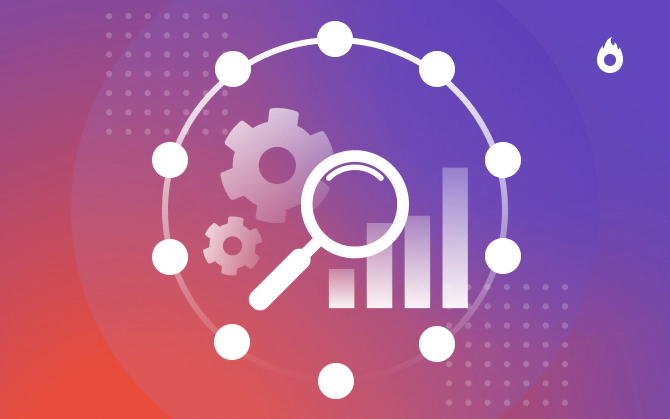
Learn About the 7 Digital Marketing Kpis You Have to Keep an Eye on in Your Business
Thinking strategically involves analyzing the right metrics. Learn more about 7 of them in this article!

What will we see in this post
With lots of business possibilities and competition in marketing, you can’t waste time or neglect your strategy. More than ever, you need to keep an eye on certain digital marketing KPIs to make sure that your campaigns are on the right track.
These numbers can help you see the parts of your strategy that are going well and those that need to be adjusted. Knowing this in time might be critical to turning failure into success.
But there are many metrics available in the digital environment, which might be confusing even for those who already work with it.
It’s very important to choose the right indicators for this analysis so you can always improve and be innovative in your business. Check them out:
1. Conversion rate
The idea behind monitoring digital marketing KPIs is to make sure that your actions are working, right? So, you need to start with a metric that goes straight to the point and shows how successful your initiatives are.
The conversion rate indicates the percentage of people impacted by your content that have been converted in some way, i.e., they bought a product, subscribed to your newsletter, scheduled a visit or any other action you’d like to monitor.
This rate reveals your campaign’s effectiveness. In other words, a low conversion rate means that you aren’t able to convince your target audience about the value of your offer.
2. ROI
All areas of a company need to have the habit of calculating the ROI. The Return on Investment acronym has the goal of showing how much a certain action, campaign or even a certain department is generating in terms of financial gain.
The idea of course, is to always have a return higher than the initial investment.
Monitoring the ROI will help you move towards this goal, always having the option of stepping on the brakes if you notice something wrong.
Do you want to know how to calculate the ROI of a given activity in your company?
Then take a look at the following formula:
ROI = (net income– total investment) / total investment.
3. Bounce rate
Does your audience really appreciate your content? A good way of getting to the bottom of this question is to measure the bounce rate.
This digital marketing KPI shows when a visitor arrives on your website and immediately leaves it. This means that perhaps this person didn’t find what they were looking for and that the page was irrelevant.
To prevent an increase in your bounce rate, you need to analyze your content and what your audience is seeking. Thus, you’ll be able to prepare relevant content.
4. Click-through rate
Some actions are intended to lead your audience to a particular landing page. Monitoring the effectiveness of your marketing campaigns at this time is critical so you can understand its performance.
If people aren’t clicking on your offers, something needs to change in your strategy. Perhaps your wording isn’t persuasive enough or your image hasn’t inspired this action.
Calculating the click-through rate is quite straightforward: Just divide the number of people who clicked on your offer by the total audience number. As you probably imagine, the idea here is to keep this number always growing.
5. CPM
CPM stands for Cost-Per-Mille. This digital marketing metric is usually used to measure the results you obtain with your paid media campaigns focused on brand visibility and awareness.
In other words, since the goal is to be seen by many people, it makes sense to calculate how much you’re going to pay for view volume. Most media platforms nowadays give you the option of using CPM, such as Google Ads and Facebook Ads.
Do you want to know how to measure?
It’s simple: Just divide the total campaign cost by the number of impressions that the ad received and then, multiply this result by 1,000. Being on the right track means keeping this value as low as possible.
6. CPC
This is another digital marketing KPI related to media campaign billing. CPC stands for cost-per-click and as the name says, it has to do with a very specific action, which is clicking to the ad’s target.
In many cases, only wanting views might not make sense. You might want to lead people to your website, for example. So, you have to choose the CPC mode so that the click-through rate is the campaign’s KPI.
Calculating the CPC is very easy: just divide the campaign’s cost by the number of clicks you have obtained. In other words, low CPC is always desirable.
7. CPA
CPA stands for cost per action. This is another digital marketing KPI used to measure paid media expenses. With it, the most important metric for your brand will be the events.
But what do you mean with events? It’s the case of wanting someone to be converted, purchase a product, sign up for a service or newsletter, fill out a registration form, etc.
It is calculated by dividing the campaign’s total cost by the number of events it achieves. Thus, we can say that a low CPA means that you are selling more for less.
Start tracking your digital marketing KPIs
Now it’s time to perform a detailed analysis of your strategy. There’s only one way to assess if it is generating value for your company: by tracking your digital marketing KPIs.
Take your goals and objectives into account and start analyzing the metrics. From this point on, check for what needs to be adjusted, and use your successes as a learning tool in order for your work to become increasingly strategic.
Did you see how analyzing digital marketing KPIs greatly influences your results? It’s even better when you have valuable ideas from the get-go. Find the inspiration you need in our article about how to make money from your talents!





